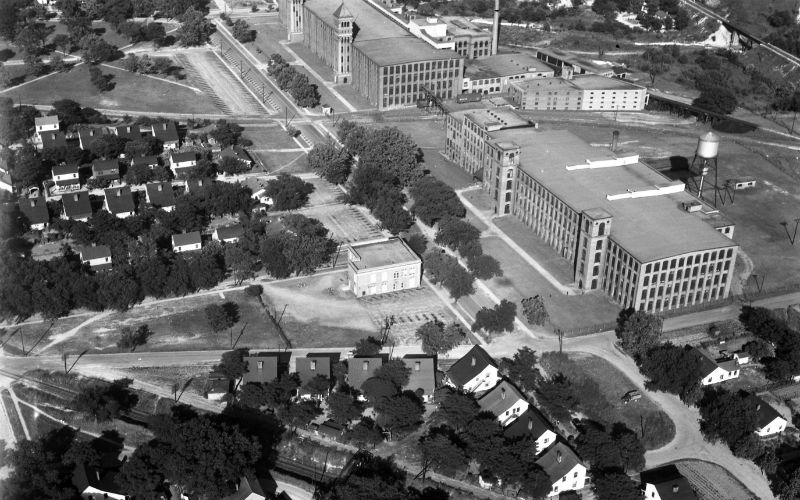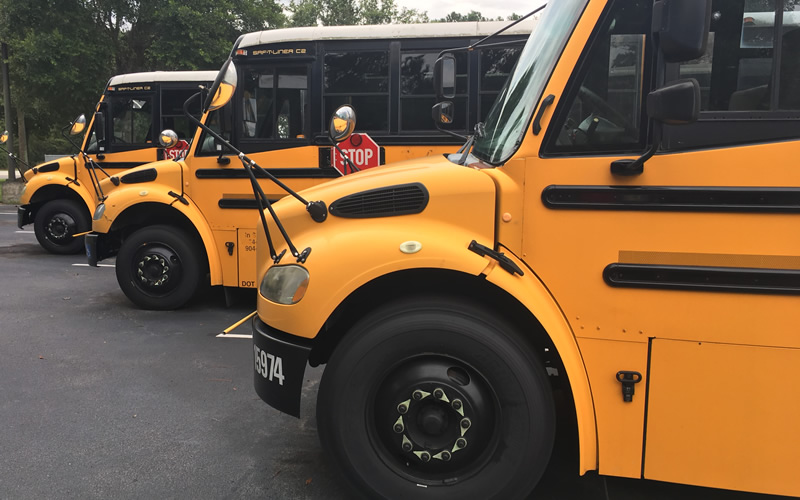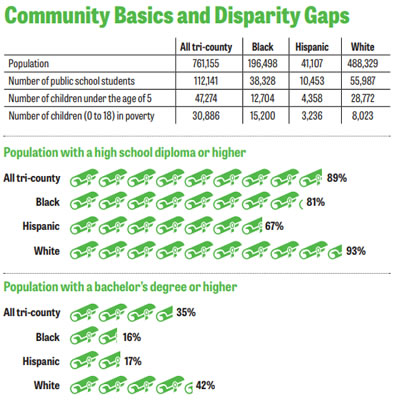MYSTERY PHOTO: Gold top
The only clue we’ll give you to this week’s Mystery Photo is it is not in South Carolina. So what is it and where is it? Send your guess to editor@charlestoncurrents.com with “Mystery Photo” in the subject line. Please make sure to include your name and contact information.
Last issue’s mystery
 The April 2 Mystery Photo may have been the best ever (so far) because it was one of three of the same thing. Last week’s photo shows the top of a “standpipe” water tower in Walterboro. But wait, there are two other similar structures in South Carolina — one in nearby Allendale and another in the Upstate in Belton (we didn’t know about the Belton one.)
The April 2 Mystery Photo may have been the best ever (so far) because it was one of three of the same thing. Last week’s photo shows the top of a “standpipe” water tower in Walterboro. But wait, there are two other similar structures in South Carolina — one in nearby Allendale and another in the Upstate in Belton (we didn’t know about the Belton one.)
Hats off to those who correctly identified the Walterboro tower: George Graf of Palmyra, Va.; Joe Mendelsohn of Charleston; and Tom Tindall of Creston, N.C.
Graf provided some more detail: “According to altlasobscura.com, it took a Boston engineering firm a couple of years to build the 133-foot tower, which was completed in 1915, and it employs what’s known as a standpipe system. 100,000 gallons of water is stored in the top and, using plain old gravity to pressurize the water up above (with a little help from hydro pumps), the water is pushed down through the pipe system and out to homes and businesses. The Walterboro Water Tower is one of only three standpipe systems in the state of South Carolina.
“There is a small door at the base of the tower that leads to a space that was once used as a county jail. Long since out of penal service, there are six small cells, and just a couple of windows. Some say that these cells later served as sleeping quarters for stranded travelers who needed a place to stay for a night.”
Tindall provided similar information, including, “The Walterboro Water Tower is included in the National Register as a part of the Walterboro Historic District.”
- Send us a mystery: If you have a photo that you believe will stump readers, send it along (but make sure to tell us what it is because it may stump us too!) Send it along to editor@charlestoncurrents.com.
MYSTERY PHOTO: Gold top
FOCUS: Interstate 526 completion isn’t actionable plan, but smoky scheme
COMMENTARY, Brack: S.C. friendship touted in new book isn’t all that unlikely
IN THE SPOTLIGHT: Magnolia Plantation and Gardens
CAREERS, Fanning: Video on how to stop wasting time
GOOD NEWS: New education report seeks to provoke education change
FEEDBACK: Send us a letter
S.C. ENCYCLOPEDIA: Mill villages in South Carolina
CALENDAR, April 9+: Beers with dogs and books, more
FOCUSFOCUS: Interstate 526 completion isn’t actionable plan, but smoky scheme
By Fred Palm, contributing columnist | Charleston County’s new plan to finish I-526 remains secret but includes recent half-cent sales tax money. Seemingly, we should not care about nor want to know the details of this plan that has yet to find a financing source in the county budget. Smoky at best.
 There is just some number – let’s call it “$X” — developed years ago given as the “estimated” cost. This number, worth hundreds of millions of dollars, has been repeated enough times that it seems to be true. $X has never been worked up by a reputable engineering firm. $X has not been adjusted for years of inflation. $X has never been bid out thus lacks the market’s reaction. $X is pushed by the current crop of elected leaders for inexplicable reasons with ill-defined benefits, and to whom.
There is just some number – let’s call it “$X” — developed years ago given as the “estimated” cost. This number, worth hundreds of millions of dollars, has been repeated enough times that it seems to be true. $X has never been worked up by a reputable engineering firm. $X has not been adjusted for years of inflation. $X has never been bid out thus lacks the market’s reaction. $X is pushed by the current crop of elected leaders for inexplicable reasons with ill-defined benefits, and to whom.
$X is going to saddle you and your children with a continuing obligation that will deliver very little benefit to the county overall. $X will be added next to another crippling number, $Y, which represents the outstanding settlement that the state’s taxpayers inherit from the failed Summer nuclear project that is still in limbo.

Why would you move to a place with a big ball of debt that clouds the ability to:
- Put in place heretofore unaddressed badly-needed flooding infrastructure and drainage investments to stay dry out into the future;
- Add connecting roads to create a network;
- Fund a legitimate transportation system that removes vehicles from congested highways;
- Support schools that teach too few;
- Provide needed water treatment plants, and unfortunately,
- Have its sales tax revenues maxed out and pledged to others for generations?
A recent bend in the population curve will drive down even further the heralded growth even faster, with this decision to build yesteryear’s vision of an outer-ring, commuter-based suburban development that I-526 is. It totally lacking as a viable alternative way to commute to work over the entire commuting distance.
We need to move on from this failed vision and elect AAA players, instead of minor leaguers in over their heads. Local does not mean that the best is put on the field. Best is who we need to elect to make these decisions wisely for the common good.
- Have a comment? Send to: editor@charlestoncurrents.com
BRACK: S.C. friendship touted in new book isn’t all that unlikely
By Andy Brack, editor and publisher | In 1975, the rock group War released a popular song titled “Why can’t we be friends.” It wasn’t complicated. The title was repeated a lot between various couplets, including this one: “The color of your skin don’t matter to me; As long as we can live in harmony.”
 Forty-three years later, two South Carolina Republican members of Congress released a book on friendship that for all intents and purposes reiterates a similar theme.
Forty-three years later, two South Carolina Republican members of Congress released a book on friendship that for all intents and purposes reiterates a similar theme.
“If we want to build friendships with people across lines of division, we must focus on what we have in common and not become distracted by what separates us,” U.S. Sen. Tim Scott writes in the new book with Upstate Congressman Trey Gowdy. This theme of building toward harmony fills the book from a leading publisher of works aligned with biblical principles.
While the book, titled “Unified,” is filled with practical advice on how to grow and deepen friendships, the subtitle — “How Our Unlikely Friendship Gives Us Hope for a Divided Country”– rubs the wrong way.
The inside cover elaborates: “Decades ago, no one would have predicted their paths would one day be intertwined. But they became good friends and an inspiration to others.”
But is this friendship really “unlikely” in 2018? Scott and Gowdy are from South Carolina. They’re about the same age. They both were elected to the U.S. House in the same year. They self-identify as conservative Republicans. They don’t drink alcohol or “party.” They’ve got a deep faith.
What really would be unlikely is if these two guys were NOT friends.
Perhaps the subtitle is a publisher’s race-infused promotion so the authors can get on television, sell books and share their narrative.
But is there something deeper going on at a more strategic level, particularly since the book was released the same week the nation remembered the assassination of Dr. Martin Luther King Jr.? Perhaps the book is a way to spin an alternative narrative as Americans reflect on King’s legacy. Perhaps during the country’s malaise of division it is a way to illustrate that Republicans, the vast majority of whom are white, aren’t all that bad. Is the book an elegant attempt to lure black voters from the Democratic Party?
If King were alive today, he likely wouldn’t be surprised that Scott and Gowdy were friends. Remember King’s famous quote from the “I Have a Dream” speech made in 1963, a year before Gowdy was born and two years before Scott’s birth:
“I have a dream that my four little children will one day live in a nation where they will not be judged by the color of their skin, but by the content of their character.”
The publishers have done a disservice to Scott and Gowdy by using the word “unlikely” in the subtitle because their friendship is not born of race. It’s born of shared values and experiences.
King would celebrate this friendship because it was exactly the kind of relationship he envisioned more than 50 years ago for a united American family.
But there’s a difference between King’s vision and that of Scott and Gowdy. King believed that government can help the downtrodden be uplifted and become part of the American dream. He believed working through government can lift up people by promoting racial and economic justice.
Scott and Gowdy have a narrower political vision — limited government, more individual rights and less involvement of Washington in people’s daily lives. They encourage people to develop deeper friendships with others they don’t know by focusing on what they have in common and moving toward more difficult subjects. They offer a lot of good advice.
But the book by the South Carolinians is a model of individually-based empathy — developing one-on-one friendships as a way for the nation to heal. King’s contrasting vision focused on collective empathy — a movement — for change for people who had been trampled for generations.
The book by Scott and Gowdy calls for quenching the nation’s thirst for unity by “cleaning the slate” through faith, forgiveness, reconciliation, love and more.
Unfortunately, the book isn’t as instructive outside of Christian individualism on how the nation can heal broadly.
- Have a comment? Send to: editor@charlestoncurrents.com
SPOTLIGHT: Magnolia Plantation and Gardens
 The public spiritedness of our underwriters allows us to bring Charleston Currents to you at no cost. Today we shine our spotlight on Magnolia Plantation and Gardens, founded in 1676 by the Drayton family. It has survived the centuries and witnessed the history of our nation unfold before it from the American Revolution through the Civil War and beyond. It is the oldest public tourist site in the Lowcountry and the oldest public gardens in America, opening its doors to visitors in 1870. Open 365 days a year, Magnolia offers its visitors splendid tours of nature and history and the role African-Americans played in the development of its award-winning Romantic-style gardens.
The public spiritedness of our underwriters allows us to bring Charleston Currents to you at no cost. Today we shine our spotlight on Magnolia Plantation and Gardens, founded in 1676 by the Drayton family. It has survived the centuries and witnessed the history of our nation unfold before it from the American Revolution through the Civil War and beyond. It is the oldest public tourist site in the Lowcountry and the oldest public gardens in America, opening its doors to visitors in 1870. Open 365 days a year, Magnolia offers its visitors splendid tours of nature and history and the role African-Americans played in the development of its award-winning Romantic-style gardens.
- Visit magnoliaplantation.comto learn how you can experience a complete plantation experience.
- Click here to learn about events and what’s new.
FANNING: Video on how to stop wasting time
By Ben Fanning, contributing columnist | Did you know that you waste time when you switch between activities?
You’re wasting time because every time you switch to a new task, it leaves “attention residue” that negatively impacts your efficiency.
Here it is from attention rescue expert Sophie Leroy: “[P]eople need to stop thinking about one task in order to fully transition their attention and perform well on another. Yet, results indicate it is difficult for people to transition their attention away from an unfinished task and their subsequent task performance suffers.”
In other words you’re still thinking about the previous task when you move on to the next… even if you don’t realize it. So try this one strategy to eliminate the need for task switching and stop wasting time — batch process.
This is well known in manufacturing and computer design circles, but it’s time to bring it to your workday. If you’re not batch processing, you’re wasting time. Use batch processing by grouping like tasks at work to eliminate the need for task switching.
Here are three steps to use batch processing in your work =day:
- Identify recurring tasks in your workday. Scan your calendar and write those down. Here are some examples:
- Answering email
- Filing expense reports
- Trip planning
- Returning phone calls
- Scheduling meetings
- Reading
- Cleaning
- Block time on your calendar and assign that block to one of the processes above.
- Do only that activity for that entire block of time Notice how that simple shift eliminates the time waste and increases your speed and efficiency.
- For more tips and strategies for getting your gotta do work done go to http://benfanning.com/
GOOD NEWS: New education report seeks to provoke education change
Staff reports | Tri-County Cradle to Career Collaborative (TCCC) last week released an annual report intended to provoke the disruption of the status quo in public education to improve student outcomes.
“It is clear that every child can learn, and, yet, too many of our students are leaving high school unprepared for either college or a career and less likely to realize their dreams,” said Anita Zucker, chair of the TCCC board of directors and CEO of The InterTech Group. Without local, qualified candidates, our businesses will struggle to fill available, high-paying jobs, and the region’s economic success and quality of life will suffer,
“There are too few civic and business leaders demanding something better, especially for students of color and of poverty who are the least well served. It is past time for us all to speak out, engage and insist every child receives an excellent education.”
The report, the organization’s fourth annual, is titled “Constructive Disruption.” Each year since 2015, TCCC has published the Regional Education Report to highlight where the region where this region stands on education, showcase bright spots and show where additional work is needed to achieve 2025 goals. While TCCC continues in its fourth report to provide updated regional data across the continuum, this report acknowledges that little or no progress has been made.
“The data continue to say the same thing. Public education in our region is failing to educate a significant number of our children,” said TCCC CEO John C. Read. “Low-income, mostly Black and Hispanic children are faring the worst, and, in many ways, those who work in public education, especially teachers, are the victims of this systems failure as well.”
According to a press release, the annual report makes specific recommendations on equity and improvement across the continuum, while acknowledging that the politics of public education make positive action on these recommendations highly doubtful. Some examples include:
- Quality pre-school (3K and 4K) for all should be mandated and funded by the state.
- Where school choice is policy, transportation should be provided for those who need it.
- The Title 1 mandate, provided for students living in poverty, should be fully funded.
- The Individuals with Disabilities Education Act (IDEA) should be fully funded.
- Districts should require all high school seniors to complete a math course and the FAFSA.
- Act 388, a state law that limits the ability of governments to raise money for schools, should be changed.
- Professional development programs for teachers and principals should be a top priority.
- Financial incentives should be given to the best teachers to serve in challenging schools.
- Alternative pathways to teacher certification should be developed and implemented.
“Our community needs to own the responsibility to educate its children,” Read said. “Early childhood supports do not now provide what all children and their families need to be ready for school. Public schools fail to educate many of our children, and when they leave high school, whether as a graduate or dropout, they are sent off largely unready and unsupported.”
- To read the report, go to: TriCountyCradleToCareer.org
In Good News this week:
![]() Get ready to rescan. WCSC, the local Raycom Media-owned CBS affiliate, is moving frequencies on June 1, which means viewers who watch TV for free will have to rescan their air antennae to keep watching the station. The rescan is necessary because the FCC is requiring the station and nearly 1,000 others nationwide to move to new frequencies to make room for wireless internet services, according to a press release. To rescan, you don’t need to buy new equipment. You can learn how to rescan on June 1 by visiting the station’s website.
Get ready to rescan. WCSC, the local Raycom Media-owned CBS affiliate, is moving frequencies on June 1, which means viewers who watch TV for free will have to rescan their air antennae to keep watching the station. The rescan is necessary because the FCC is requiring the station and nearly 1,000 others nationwide to move to new frequencies to make room for wireless internet services, according to a press release. To rescan, you don’t need to buy new equipment. You can learn how to rescan on June 1 by visiting the station’s website.
Free cone. You can get a free ice cream cone April 10 at the Ben & Jerry’s stores in Charleston (95 N. Market St.) and Isle of Palms (1109 Ocean Blvd.) in an annual event to celebrate and thank customers. Free cones are available from noon to 8 p.m. “We love getting involved with and giving back to our communities. It’s amazing what we can do together over shared values and several scoops of ice cream,” said Andrew Lee, the company’s local franchisee.
Free shredding. Charleston County’s Environmental Management Department (CCEM) is celebrating Earth Day by hosting four free shred events located throughout the county. The shred events will be held from 9 a.m. to noon on April 21. CCEM will accept confidential documents for free on-site shredding and recycling from residents of Charleston County; no commercial business material will be accepted. Free shredding locations are:
- Citadel Mall (JC Penney’s Parking Lot), 2070 Sam Rittenberg Blvd, Charleston
- Mount Pleasant DMV, 1189 Sweetgrass Basket Pkwy, Mount Pleasant
- Northwoods Mall (Dillard’s Parking Lot), 2150 Northwoods Blvd, North Charleston
- Signal Point Road Convenience Center, 1716 Signal Point Rd, Charleston 29412
New airline. Allegiant last week celebrated the start of new nonstop service to Charleston from Cincinnati, Indianapolis and Pittsburgh. The company, known for its exceptional travel deals, is offering one-way fares on the new route for as low as $65 (seats are limited and generally must be purchased by June). “We’re excited to launch nonstop, affordable service from these three cities to Charleston,” said Lukas Johnson, Allegiant senior vice president of commercial. “We’re so excited to offer travelers a convenient option to explore Charleston’s rich history, while also contributing to visitor spending in the local economy.” Learn more: Allegiant.com.
- Have a comment? Send to: editor@charlestoncurrents.com
FEEDBACK: Send us your thoughts
We love hearing from readers. Comments are limited to 250 words or less. Please include your name and contact information. Send your letters to: editor@charlestoncurrents.com| Our feedback policy.
S.C. ENCYCLOPEDIAHISTORY: Mill villages in South Carolina

An aerial view of Pacific Mills and Olympia Mill village in Columbia. Copyrighted image courtesy the Richland Library.
S.C. Encyclopedia | The establishment of the Pelzer Manufacturing Company’s mill on the Saluda River in Anderson County in the early 1880s marked the beginning of the Piedmont mill village boom. Early textile entrepreneurs built not only factories but frequently also entire villages, such as Piedmont in Greenville County, Clifton and Pacolet in Spartanburg County, and Graniteville and Langley in Aiken County. To ensure a steady supply of labor, employment contracts were signed with whole families, rather than with individuals, and the mill villages were central to this effort to retain employees. Quality housing and other amenities were crucial to attract and retain workers to the often-isolated location of early mills. When mill villages were at their peak in the early 1900s, it has been estimated that as much as one-sixth of South Carolina’s white population lived and worked in them.
Villages often followed a simple pattern, with workers housed in rows of identical single-family houses or, in some cases, duplexes, while higher-ranking managers lived in larger houses closer to the mills in the community centers. Black employees were housed in separate alleys, often on the other side of the mills from their white counterparts. In addition to housing, mills usually built churches and schools, and they sometimes provided electric lights and other amenities. Many mills retained company stores that sold on credit, and workers were sometimes paid in credits redeemable only at the company stores. Mills provided structured recreation as well, with baseball and softball teams providing a sense of community to boost employee morale.
Despite the often-paternalistic approach to the operation of the villages, many mill villages gained a reputation for crime, disorder, drunkenness, and other vices. Mill workers were often derisively referred to as “lintheads.” Mill owners worked to counter this reputation through intensive public relations campaigns. Pelzer and other mill villages prohibited saloons, imposed curfews, and even banned dogs in an effort to appear cleaner and more desirable.
As technology made it possible for mills to locate farther from water power sites and closer to an existing labor supply, the isolated mill villages soon gave way to enclaves established nearer to major towns. But the practice of providing housing, churches, company stores, and recreational facilities continued, as a means of maintaining control over the lives of an increasingly mobile workforce. Such plans, though often couched in the humanitarian language of paternalism, were aimed at forestalling any attraction workers might have toward organizing unions or engaging in other political activities. Thus, mill villages such as Drayton, Berea, Olympia, and many others formed virtually adjacent to, yet socially and politically separate from, Spartanburg, Greenville, and Columbia. Attempting to assuage fears that rural people recruited as mill workers might disturb town life, mill owners began promoting the mills as a positive good that could bring culture, education, and religion to the uncultured, uneducated, and unchurched rural folk. Meanwhile, politicians in smaller towns such as Clinton, Abbeville, and Newberry struggled to compete for the opportunity to build mills, regarding such investment as a virtual guarantee of prosperity much as their antebellum counterparts regarded raising cotton. The town of Clinton, home to Presbyterian College, saw its leading citizen W. P. Jacobs assert that the successful opening of the mill there was proof of God’s favor and the town’s righteousness.
In an effort to curb costs and preserve profits during the declining economic conditions of the 1920s, mill superintendents tried to get more work out of fewer workers, resulting in a phenomenon workers called the “stretch-out.” Conditions deteriorated as mill owners opted to discontinue funding community improvements, and housing and other facilities were allowed to deteriorate. The stretch-out and a series of bitter strikes undermined workers’ acceptance of existing conditions and exposed the shortcomings of the highly publicized paternalism of mill owners.
The mill villages were dismantled for many reasons, beginning in the 1920s. The automobile became more affordable, making it easier for workers to commute and easier for them to change jobs if working conditions deteriorated. Tougher child labor laws undermined the custom of hiring entire families to work, making it less cost-efficient for companies to provide housing. Intense competition forced mill owners to reexamine their costs, and often the amenities of the mill villages were allowed to decline. Additionally, during the 1920s many small mills were bought out by larger competitors who seldom had much stake in community life unless it affected the bottom line measurably. Many mill owners, contemplating the increasing mobility of the workforce, concluded that workers would be more likely to remain in the community if they invested in it as homeowners, and they began the process of selling the houses off, with their current occupants sometimes given first option to purchase at a slight discount from market value. Still, the companies remained in charge of the process. In many cases workers with a reputation for complaining or working to unionize were told that they would not be offered the chance to buy, and most white mill neighborhoods remained all-white until federal intervention in the 1960s. As the villages were sold off and institutions supported by the mills declined, the sense of community evident in neighborhood stores, parks, schools, churches, and mill league baseball declined, leaving behind only the physical artifacts of the mill village: rows of identical houses surrounding, in many cases, a silent and empty mill building.
— Excerpted from an entry by Fritz Hamer. To read more about this or 2,000 other entries about South Carolina, check out The South Carolina Encyclopedia, published in 2006 by USC Press. (Information used by permission.)
ON THE CALENDARCALENDAR, April 9+: Beers with dogs and books, more
Barks and Brews: 5 p.m. to 8 p.m., April 10, Magnolia Park and Community Garden, West Ashley. The Charleston Parks Conservancy will hold an event with food trucks and beer and wine for sale. There will be a dog agility course and music. Tickets are $10 each. Purchase here.
Books for Bier: 5::30 p.m. to 8 p.m., April 10, Bay Street Biergarten, East Bay St., Charleston. The Charleston Friends of the Library will have their third annual Books for Bier event to celebrate National Library Week. As the event name implies, bring a gently used book to Bay Street Biergarten and receive one free beer! Also, any child who brings a children’s book to donate will receive a free root beer! (Limit one beverage per person). More: www.CharlestonLibraryFriends.org.
Designer showcase: Through April 15, 142 Tradd St., Charleston. The Charleston Symphony Orchestra League will present its Symphony Designer Showhouse with proceeds to benefit the league and scholarships. The showcase house, a three-story stucco home built around 1870 on one of Charleston’s classic streets, will display twelve exquisitely decorated spaces designed by locally and nationally renowned interior designers. For more on tickets and information, click here.
Wine Down Wednesdays: 5:30 p.m. to 7:30 p.m., on April 18 and May 2, Old Towne Creek County Park, West Ashley. While this new county park is not yet open daily to the public, these Wednesday opportunities offer Lowcountry residents the chance to experience the beauty of this property. Tickets needed. More: CharlestonCountyParks.com/WDW.
Charleston Outdoor Festival: 9 a.m. to 4 p.m., April 20 and 21, James Island County Park. The weekend festival includes a multitude of outdoor recreation activities like mountain biking, slack lining, archery, climbing, and disc golf, open to all ages. It also features the East Coast Canoe and Kayak Symposium, one of the country’s premier showcases of canoeing, kayaking and stand up paddleboarding. Try out equipment, compete in tournaments and other hands-on activities, and learn everything from the basics to expert skills in each sport. Park admission starts at $2 per person. To try activities, get the Try It pass for $10. Or, register for the symposium for classes, demos and much more. For a full event schedule, visit charlestoncountyparks.com or call 843-795-4386.
Antique tractor show and pull: 1 p.m., April 21, 5146 Highway 174, Adams Run. Gates will open at 9 a.m. as people flock to see more than 50 fully restored farm tractors from the 1930s, 1940s and 1950s on display along with vintage automobiles. Food vendors and games for children make the event fun for the whole family. Tractor-pulling contest begins at 1 p.m. Admission is $5 for adults; children under 12 are free. No pets; no alcohol. More information, contact, Pete Laurie, 843-822-2057.
Early morning bird walks at Caw Caw: 8:30 a.m. every Wednesday and Saturday, Caw Caw Interpretive Center, Ravenel. You can learn about habitats and birds, butterflies and other organisms in this two-hour session. Registration not required, but participants are to be 15 and up. $10 per person or free to Gold Pass holders. More: http://www.CharlestonCountyParks.com.
Farmers markets in the area
SATURDAYS: Johns Island Farmers Market operates each Saturday from 10 a.m. to 1 p.m. year-round with more than 50 local farmers and vendors, food trucks, music and more. The market is located on the campus of Charleston Collegiate School, 2024 Academy Road, Johns Island.
SATURDAYS: The Town Market on James Island are again open. Open 9 a.m. to 1 p.m. every Saturday at the James Island Youth Soccer Club, 871 Fort Johnson Road, James Island.
Coming soon:
WEDNESDAYS: West Ashley Farmers Market is open 3 p.m. to 7 p.m. every Wednesday from April 25 to Oct. 3 in Ackerman Park, 55 Sycamore Ave., West Ashley.
SATURDAYS: Charleston Farmers Market opens every 8 a.m. to 2 p.m. Saturday starting April 15 every Saturday through Nov. 24 at Marion Square. A holiday market will be open Dec. 1, 2, 8. 9, 15 and 16.
- If you have an event to list on our calendar, please send it to editor@charlestoncurrents.com for consideration. The calendar is updated weekly on Mondays.
About Charleston Currents
OUR UNDERWRITERS
Charleston Currents is an underwriter-supported weekly online journal of good news about the Charleston area and Lowcountry of South Carolina.
- Meet our underwriters
- To learn more about how your organization or business can benefit, click here to contact us. Or give us a holler on the phone at: 843.670.3996.
OUR TEAM
Charleston Currents offers insightful community comment and good news on events each week. It cuts through the information clutter to offer the best of what’s happening locally.
- Mailing address: P.O. Box. 22261 | Charleston, SC 29413
Phone: 843.670.3996
Charleston Currents is provided to you twice a week by:
- Editor and publisher: Andy Brack, 843.670.3996
- Contributing photographer: Michael Kaynard
- Contributing editor, careers: Ben Fanning
- Contributing editor, common good, Fred Palm
- Contributing editor, money: Kyra Morris
- Contributing editor, Palmetto Poem: Marjory Wentworth
SUBSCRIBE FOR FREE
Subscriptions to Charleston Currents are free.
- Click here to subscribe.
- Unsubscribe. We don’t want to lose you as a reader of Charleston Currents, but if you must depart, please click here.
© 2008-2017, Statehouse Report, LLC. All rights reserved. Charleston Currents is published every Monday by Statehouse Report LLC, PO Box 22261, Charleston, SC 29413.










 We Can Do Better, South Carolina!
We Can Do Better, South Carolina!
























